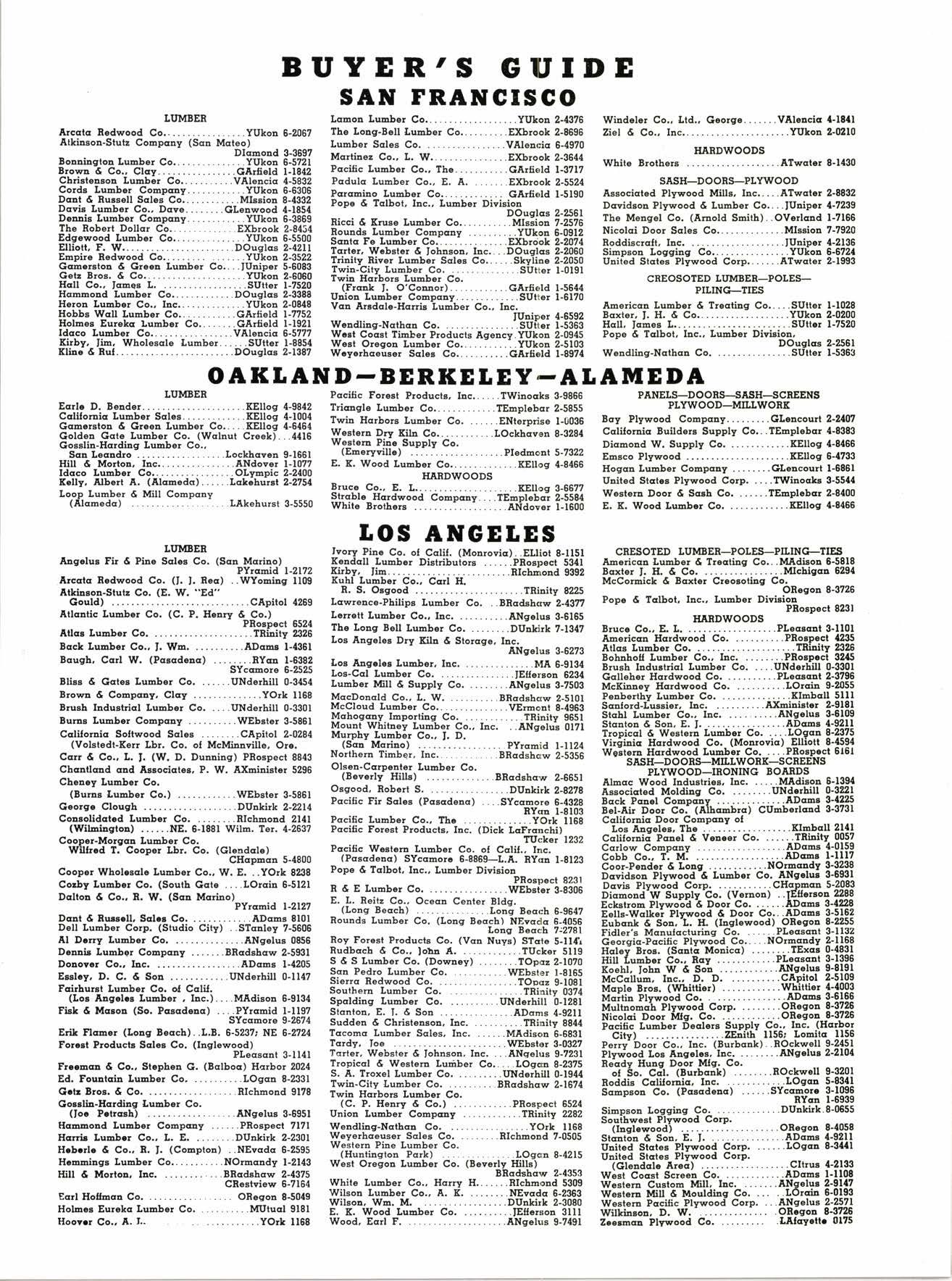
3 minute read
Building Prospects for 1953
New construction activity in 1953 is expected to reach a new peak, perhaps rising about $l billion over the $3217$ billion apparent for 1952, according to outlook estimates prepared jointly by the U. S. Labor Department's Bureau of Labor Statistics and the Building Materials Division of the U. S. Department of Commerce. Some expansion is likely in the coming year in both private and public construction.
The outlook for record construction activity in 1953 assumes that business will remain good, buoyed in part by increasing defense expenditures, at.least in the early part of the year. Barring major international developments in 1953. it rvas assumed also that materials rvould be plentiful, that the limited controls in force would not interrupt construction operations, that the labor supply rvould be adequate, and that costs u'ould remain relatively stable.
A peak ol $22.2 billion in 1953 expenditures for new private construction is anticipated, supported by a continuing high level of housing activity anC expansion in public utility plant and commercial building.
About as many private dwelling units are expected to be started as in 1952, when the million-unit mark again exceeded. Fixpenditures for new private housing actually put in place, however, at $10.2 billion, will be somewhat greater than in 1952, because 1953 will begin with a larger number of units already under way, as the unseasonally large numbers of dn'ellings begun this fall are completed. Prediction of an active home-building year is based primarily on the anticipated favorable economic climate and ready availability oi mortgage funds.
The next year is expected to be the tenth in succession of increasjng construction activity by the public utilities. Announced expansion goals suggest unprecedented expenditures of about $47r billion in 1953. Most of the 1l-per cent rise in volume over 1952 will occui in the gas and electric light and po\lrer group, for whieh an extensive backlog of both indu."trial and domestic need exists.
Commercial building activity will probably jump by over a fourth rn 1953, continuing the recovery evident in recent months as a result of improved materials availability and removal of credit controls. On the other hand, private industrial building is expected t:r drop by about the same proportion, from the 1952 record outlay of about $2% billion, as defense plant expansion programs approach completion.
Although 1953 rvill be another active defense year, the anticipated rise in total public expenditures for new construction, from $10.6 to $11.3 billion, is expected to result as much from increasing activity on civilian as on military types of public work. Highway construction will probably reach a new high of $.3 billion in 1953, or nearly l0 per cent above the 1952 level, refiecting the expanding program of federal ard to highway building, and an anticipated large volume of state toll-road construction. Ground has already been broken for the $300 million Ohio Turn-pike project, and work is proceeding rapidly on the $500 million New York State Thruway.
Public school building u'ill continue its post-war expansion into !953 responding to constantly growing classroom needs. Expected expenditures for schools of about $1.8 billion represents a lGper cent increase over the 1952 total, and the largest amount of classroom space ever to be put in place in a single year.
C)n the military side, outlays for military and naval facilities rvil! probably rise around a fifth to about gl.6 billion, as considerable new work gets under way, much of it already under contract, and the extensive current program is completed. A much more moderate rise (3 per cent) will occur in public industrial construction resulting entirely from ad-. ditions to existing atomic energy facilities and commencement of the huge atomc plant near Portsmouth, Ohio. Industrial facilities construction for the Army, Navy, and Air Force, mcstly the rehabilitation of existing orilnxncsrplants, will be substantially completed during 1953.
Public residential building will drop f.rom 1952level, reflecting the tightened statutory limitation on the start of new federally subsidized housing units. Virtual completion of the Veterans Administration program of hospital construction and reduced funds for the program of Federal aid to State and local hospitals will cause a substaptial decline in the rate of publicity aided hospital building.
Old Stoclcton Mansion Bcing Demoli*cd '
Gus Russell sends in a nervspaper clipping of considerable home interest. It concerns the historic Gray mansion in Stockton, California, which is now being demolished. The Gray family built and began occupying the beautiful home in 1872, and since that tirne none but members of that family have lived ther6. The first Gray was George Gray, an early day Stockton lumberman. The last was Mrs. Abbie Gray Garrvood rvho died recently. The magnificent Victorian parlor, a museum piece in itself, is picturid in the nervspaper clipping
In tearing dou'n the big mansion it is reported that the u'orkmen discovered not a single knot in any of the various n'oods used. It rvas one of the finest homes ever built in California. It rvas demolished to make room for a modern medical center.
How Lumber Loolcs
(Continued from Page 2) ended December n, 2W mills reporting, gave orders as 135,659,000 feet, shipments II2,227,000 feet, and pgoduction 128,783,000 feet. Unfilled orders at the end of the rveek totaled 485,560,00O feet.
' For the u'eek ended December 27, these same mills reported orders as 75,U4,W feet, shipments 71,175,(X)0 feet, and production 8OJ15,000 feet. Unfilled orders at the end of the week totaled 4XJ,29,W feet-









